Basic Principles of Traditional Chinese Medicine in Treating Cancer
Professor Lin Zhixiu
Director, School of Chinese Medicine
The Chinese University of Hong Kong
Host: Ms Janet Wong
Information Compilation : Ms Julie Mu, Ms Bernadette Cook, Ms Vivien Kam
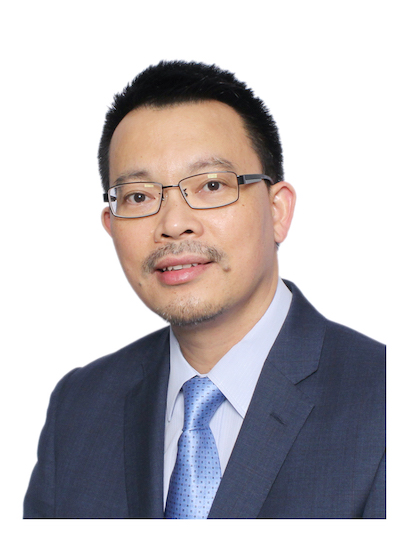

Introduction: How does traditional Chinese medicine treat cancer? In this article, Professor Lin Zhixiu explains in detail how traditional Chinese medicine understands cancer; and what are the basic principles of treating cancer, especially in terms of strengthening the body's resistance and relieving the side effects of cancer.
Part One - How Traditional Chinese Medicine Understands Cancer
Part Two - Basic Principles of Traditional Chinese Medicine in Treating Cancer - Strengthening the Body's Resistance and Expelling Pathogens
Part Three - How Traditional Chinese Medicine Relieves the Side Effects of Cancer Treatment
Part Four - Post-Recovery Management and How to Prevent Recurrence
Part Five - Acupuncture or Other External Treatments
Part One - How Traditional Chinese Medicine Understands Cancer
Wong: Many cancer patients want to receive traditional Chinese medicine treatment while receiving Western medicine treatment.
Today I am very pleased to invite Professor Lin Zhixiu, Director of the Institute of Integrated Medicine, The Chinese University of Hong Kong, to talk to us about this issue.
Thank you, Professor.
Lin : You're welcome.
Wong: Can you explain to us from the perspective of traditional Chinese medicine, how do you view cancer? For example, its causes?
Lin : "Cancer" is a general term for various malignant tumors, including various types of tumors, such as liver cancer, lung cancer, breast cancer, colorectal cancer, nasopharyngeal cancer, etc., which are very common in Hong Kong. Traditional Chinese medicine believes that the occurrence of cancer is due to the deficiency of the body's organs and blood, and various pathological products such as phlegm, dampness, and stasis are intertwined, gradually accumulating into tumors. The phlegm and dampness mentioned here are pathological substances produced by abnormal organ function and metabolic disorders of body fluids. Stasis, or blood stasis, is a pathological substance produced by blood circulation disorders.
Of course, different cancers have different specific causes, but from the macro perspective of traditional Chinese medicine, if a person's organs are deficient in vital energy and phlegm, dampness, and stasis are intertwined, the body is prone to form cancer.
Traditional Chinese medicine believes that "if the righteous qi is preserved within, evil cannot interfere"(正氣存內,邪不可幹). This means that if a person's body is full of righteous qi (similar to what Western medicine refers to as strong immunity), even if there are some adverse factors, such as poor living conditions or exposure to pathogenic bacteria, we will not get sick. On the contrary, "where evil gathers, its qi must be weak"(邪之所湊,其氣必虛), meaning that the reason our body gets sick is due to the weakness of the body's righteous qi (resistance).
Wong: What are the biggest differences between traditional Chinese medicine and Western medicine in treating cancer?
Lin: There are mainly two differences.
For malignant tumors, the main purpose of Western medicine treatment is to eliminate cancer cells, including surgical removal, radiation therapy (commonly known as electrotherapy in Hong Kong), chemotherapy, and recently developed targeted drug therapy and immunotherapy, etc. Although Western medicine has various means to treat cancer, its ultimate goal is to eliminate the tumor and kill the cancer cells in the patient's body, focusing on the local area where the patient has cancer. When Chinese medicine treats cancer, it focuses on the overall view, emphasizing "strengthening the foundation and nourishing the origin"(固本培元), helping to enhance the patient's resistance, improve the patient's quality of life, and mainly focusing on the person with cancer. In other words, Western medicine is more organ-based or disease-based, while Chinese medicine is more "holistic"(全人).
I think the measures of Chinese and Western medicine to treat cancer have their own advantages and disadvantages. If Chinese and Western medicine can be combined to complement each other, better treatment effects will be achieved.。

Part Two - Basic Principles of Traditional Chinese Medicine in Treating Cancer - Strengthening the Righteous and Eliminating the Evil
Wong: How does traditional Chinese medicine treat cancer from its perspective?
Lin: In the current medical environment in Hong Kong, the treatment of cancer, unless it is a special situation (such as the patient is old or particularly weak), is generally based on Western medicine treatment, supplemented by traditional Chinese medicine treatment. Many patients come to seek Chinese medicine conditioning after surgery, or after receiving radiation therapy and chemotherapy, and their bodies become weak; or during treatment, they ask Chinese medicine doctors to provide some methods to reduce the side effects of Western medicine treatment. According to statistics, more than 80% of cancer patients in Hong Kong receive different degrees of traditional Chinese medicine treatment and conditioning. At the same time, it can also help cancer patients alleviate the side effects brought about by Western medicine treatment, so that patients can have a stronger physique and good quality of life to face the disease.
Specifically, the basic principle of traditional Chinese medicine in treating cancer is "supporting the healthy and expelling the evil"(扶正祛邪)。
Regarding "supporting the healthy"(扶正)
In the entire treatment process, "supporting the healthy" is the most important strategy. The so-called supporting the healthy, also known as strengthening the foundation and nourishing the origin, is to assist the body's defense ability to fight against the evil, and promote the body to achieve the normal function of Yin and Yang balance. In specific operations, Chinese medicine practitioners can adopt targeted conditioning methods according to the patient's organ function disorders and different deficiencies of Qi, blood, Yin, and Yang. According to the patient's symptoms, Chinese medicine will make appropriate adjustments for them, such as adjusting Qi, blood, Yin, and Yang for patients.
Wong: Can you explain it to us in a simple way, because these Chinese terms are often heard, but not well understood.
Can you also tell us some commonly used Chinese medicines in each category, so that we have a concept when looking at the prescription?
Lin: Okay. Let's first explain the Chinese medicine term "Qi"(氣) that we often hear. Qi is unique to Chinese medicine, a very important concept, there is no such word in Western medicine, nor this concept.
Wong: If translated, is the English for "Qi" energy?
Lin: To be precise, it is bio-energy or vital energy. Now it is often translated as Qi in many English Chinese medicine books, which is the pinyin of the Chinese word "Qi".
The "Qi" mentioned in Chinese medicine refers to the most basic substance that constitutes our body, and it is also the most basic substance that maintains our body's life activities.
The Qi of the human body has various physiological functions, including defense, promotion, warming, consolidation, and nutrition. If the human body does not have Qi, the human body will lose the physiological functions that maintain life. If a person's "Qi" is insufficient, it will show different clinical symptoms, such as pale complexion, shortness of breath, fear of cold, weakness of limbs, dizziness, sweating when moving, and low voice.
In the treatment of Chinese medicine, we use tonifying methods to treat some weak symptoms. The deficiency of Qi, blood, Yin, and Yang in the body can be adjusted by tonifying methods. If Qi is insufficient, tonify Qi, if blood is insufficient, tonify blood, and so on.
"Qi deficiency"(氣虛) needs to be tonified; commonly used Qi-tonifying Chinese medicines include: ginseng, scutellaria (also known as northern scutellaria), codonopsis, pseudostellaria, poria, atractylodes, and Chinese yam(人參、黃蓍(又稱北蓍)、黨參、太子參、茯苓、白朮、淮山藥等).
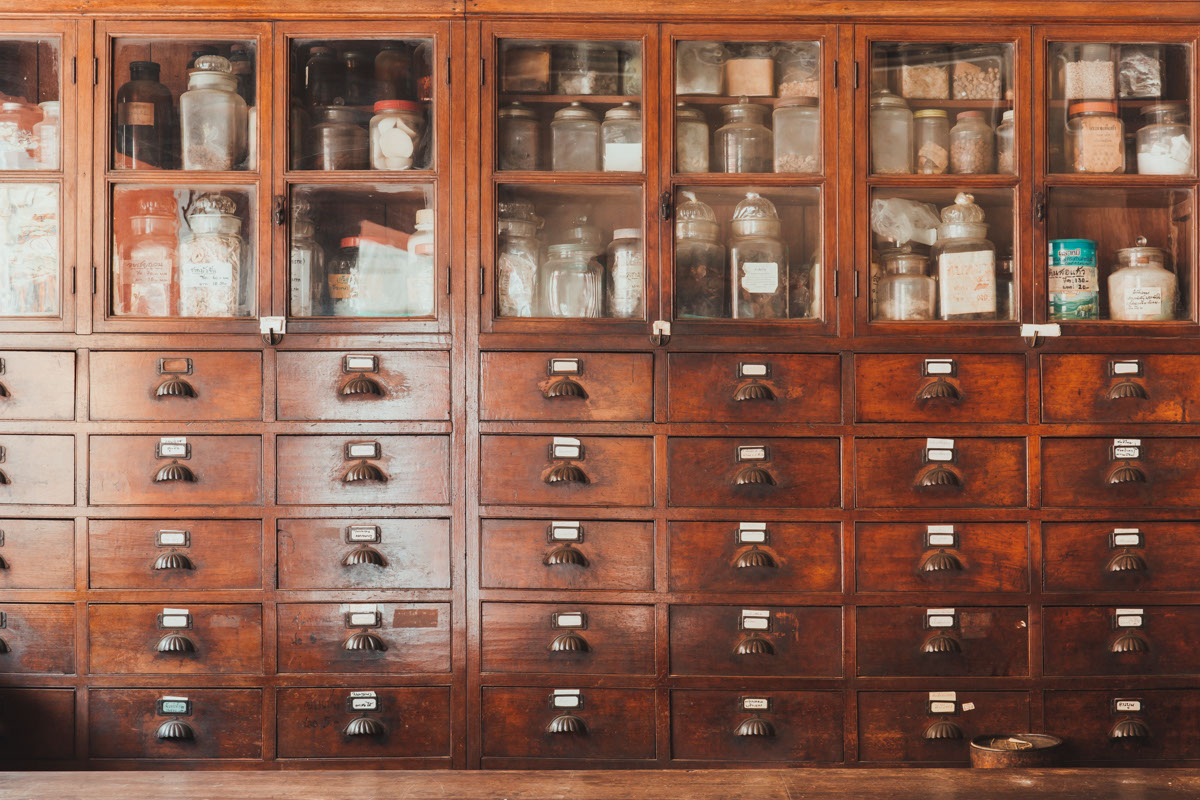
Wong: So, does "blood" refer to the circulatory system in Western medicine? How can a patient "nourish the blood" if they have "blood deficiency"??
Lin : The understanding of "blood"(血) in Chinese and Western medicine is basically the same, both referring to the red liquid flowing in the blood vessels. Blood is one of the basic substances that make up our body and maintain our life activities. It is rich in nutrients and has a moisturizing effect. If a person's "blood" is insufficient or deficient, a series of clinical symptoms will be displayed, such as pale and dull complexion, dizziness and palpitations, insomnia and forgetfulness, dry skin, numbness of the body, etc.
"Blood deficiency"(血虛) needs to be nourished; commonly used Chinese medicines include: Angelica, Rehmannia, Donkey-hide gelatin, Paeonia lactiflora, Jujube, Spatholobus suberectus, etc.(當歸、熟地黃、阿膠、白芍、大棗、雞血藤等).
Wong: So, what is "Yin"?
Lin: In traditional Chinese medicine, Yin and Yang are used to distinguish various substances with different physiological functions in the human body. Substances that can generate blood and have nourishing and inhibiting Yang heat effects are called "Ying Yin"(營陰) or "Yin part"(陰分). The components with the function of protecting and warming the body are called "Yang Qi"(陽氣).
If a person is "Yin deficient"(陰虛), different clinical symptoms will appear, such as thin body, dry mouth and throat, hot flashes and night sweats, dry stool, short and yellow urine, etc.
We can treat the symptoms of Yin deficiency through the method of "nourishing Yin"(養陰). Commonly used Chinese medicines include Adenophora, Ophiopogon japonicus, Asparagus, Polygonatum, Dendrobium, Trichosanthes kirilowii, Mulberry, Ligustrum lucidum, etc.(沙參、麥冬、天冬、玉竹、石斛、天花粉、桑椹子、女貞子等)
Similarly, if a person's "Yang Qi"(陽氣) is insufficient, opposite clinical symptoms can appear, such as fear of cold, pale complexion, cold limbs, tasteless mouth and no thirst, loose stool, long and clear urine, etc.
We can correct the state of Yang deficiency through the method of "nourishing Yang"(補陽). Commonly used Chinese medicines include Deer antler, Cistanche, Epimedium, Morinda officinalis, Cuscuta, Eucommia, Cuscuta, Cinnamon, etc.(鹿茸、肉蓯蓉、淫羊藿、巴戟天、鎖陽、補骨脂、菟絲子、肉桂等)
Wong: So, simply put, it's about supplementing what a person's body lacks?
Lin: Yes, the method of supplementation is to supplement what is lacking. In fact, the treatment principle of traditional Chinese medicine is simple and direct, which can be said to be "the great way is not complicated"(大道不繁).
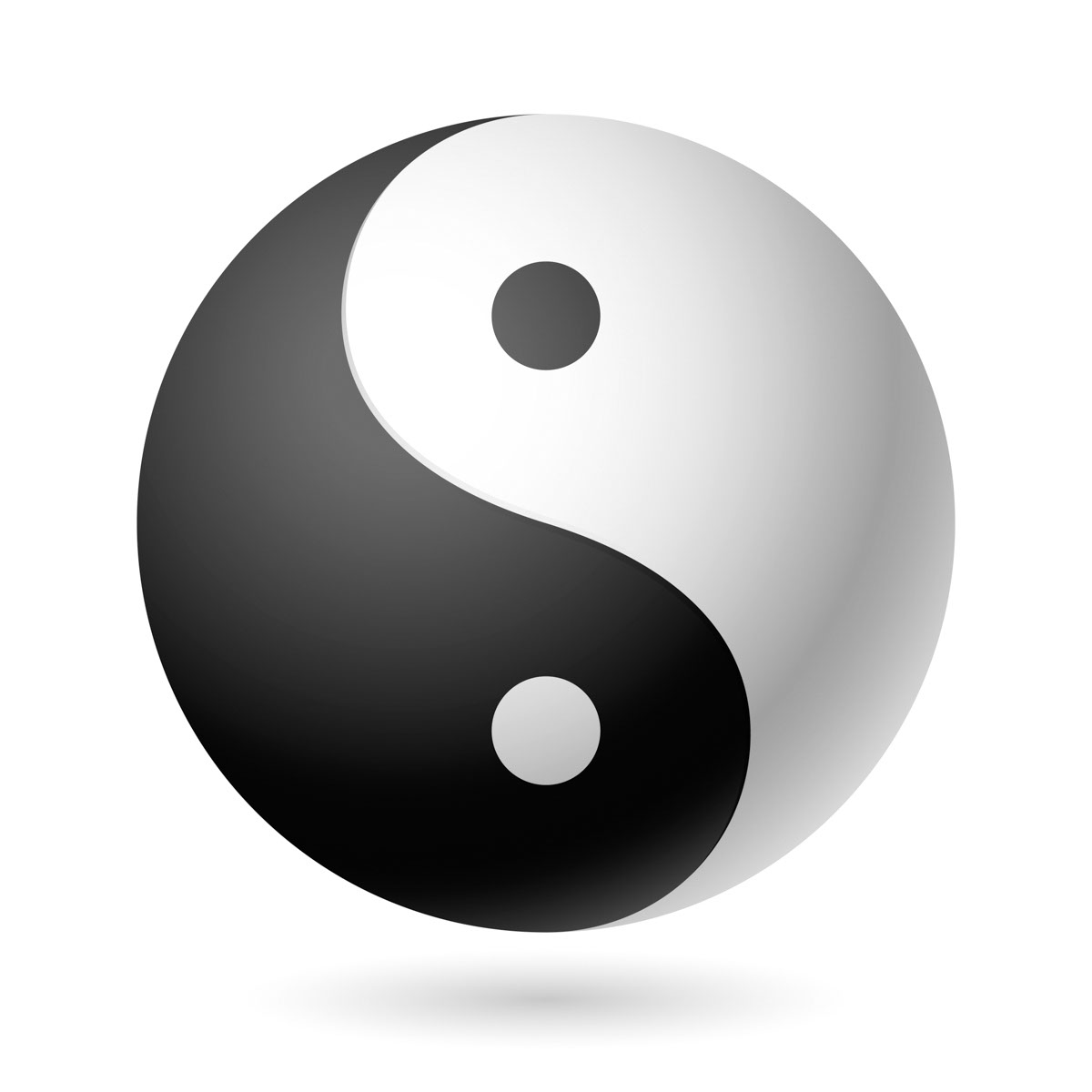
In terms of "expelling evil"(祛邪)
Wong: What does the word "expel"(袪) mean? And what does "evil"(邪), mean?
Lin: In traditional Chinese medicine, "expelling" refers to the act of driving out. "Evil" generally refers to various pathogenic factors, including the six excesses (wind, cold, heat, dampness, dryness, fire)(六淫(風寒暑濕燥火), epidemic qi (contagious pathogens)(癘氣(具有傳染性的病因)), improper diet(飲食失宜), emotional injuries(七情內傷), overwork and injuries(勞逸損傷), parasites(寄生蟲), trauma, and pathological metabolic products (such as phlegm, blood stasis, food accumulation), etc.(外傷以及病理性代謝產物(如痰飲、瘀血、食積)等。
Wong: So how do we "expel evil"(祛邪)? How is this reflected in cancer patients?
Lin: "Expelling evil" is an important means of treatment in traditional Chinese medicine. In simple terms, it is to expel the pathogenic qi that makes us sick.
In traditional Chinese medicine, if a patient has cancer, they usually have a "phlegm and blood stasis"(痰瘀互結) situation. "Phlegm"(痰) is the product of a disorder in the body's water metabolism; and "stasis"(瘀) is the product of a disorder in blood circulation. "Mutual knotting"(互結) means that phlegm and blood stasis are gathered together to form a tangible tumor. In fact, these are pathological products. These products are the products of organ dysfunction, but they in turn will disrupt the function of the organs and produce new diseases.
Wong: So how can traditional Chinese medicine specifically treat patients?
Lin: For pathological products of phlegm and blood stasis, Chinese medicine practitioners will use methods such as "transforming phlegm"(化痰), "softening hardness and dispersing knots"(軟堅散結), "dispersing stasis"(散瘀), and "reducing swelling and detoxifying"(消腫解毒).
"Transforming phlegm" is to expel or eliminate phlegm, mainly for the treatment of phlegm symptoms. Commonly used phlegm-transforming drugs include Zhejiang fritillary, Sichuan fritillary, tangerine peel, pinellia, luffa peel, bamboo shavings, gallbladder star, platycodon, etc.(浙貝母、川貝母、陳皮、半夏、瓜蔞皮、竹茹,膽南星、桔梗等)
"Softening hardness and dispersing knots" is to use drugs with softening effects to treat diseases where phlegm and blood stasis form tangible knots, which is a common treatment method for cancer tumors. Drugs with softening and knot-dispersing effects include seaweed, kelp, pinellia, oyster, trichosanthes root, grifola, etc.(海藻、昆布、半夏、牡蠣、天花粉、山慈菇等)
"Dispersing stasis" is to invigorate blood and remove stasis, that is, to smooth blood circulation and disperse blood stasis. Commonly used blood-invigorating and stasis-removing drugs include safflower, peach kernel, chuanxiong, red peony, sparganium, curcuma, angelica tail, salvia, etc.(紅花、桃仁、川芎、赤芍藥、三棱、莪術、當歸尾、丹參等)
As for "reducing swelling and detoxifying", cancer and various organ inflammations will have varying degrees of swelling, so Chinese medicine will use methods of clearing heat, detoxifying, and reducing swelling for treatment. Commonly used drugs include coix seed, alisma, poria, plantain seed, knotweed, motherwort, dandelion, etc.(薏苡仁、澤瀉、豬苓、車前子、腫節風、益母草、蒲公英等)
Wong: As mentioned earlier, the main method of Western medicine in treating cancer is to eliminate cancer cells, such as surgical treatment, radiation therapy, and chemotherapy. So in terms of traditional Chinese medicine, will there be some drugs used to kill cancer cells in addition to "strengthening the foundation and nourishing the origin"?
Lin: Yes, in the clinical practice of traditional Chinese medicine in treating cancer, while strengthening the body and nourishing the origin, some Chinese medicines with anti-cancer effects are often used to fight against cancer itself. In the prescription for treating cancer, some Chinese medicines with anti-cancer pharmacological activities are often added, such as Scutellaria barbata, Semen coicis, Hedyotis diffusa, root of kudzu vine, Grifola frondosa, and Pseudobulbus Cremastrae seu Pleiones(半枝蓮、七葉一枝花、白花蛇舌草、藤梨根,山慈菇,石打穿等). These drugs mostly have the functions of clearing heat and detoxifying, reducing swelling and dispersing knots. Pharmacological research on Chinese medicine shows that these drugs contain some chemicals that can prevent cancer cell division or induce tumor cell apoptosis.
However, in terms of killing cancer cells, of course, the treatment of Western medicine radiotherapy and chemotherapy is more rapid and effective. And when we say that these Chinese medicines have anti-cancer effects, it is based on long-term clinical observation and practical experience. In the future, we hope to confirm their anti-cancer effects through evidence-based medicine.
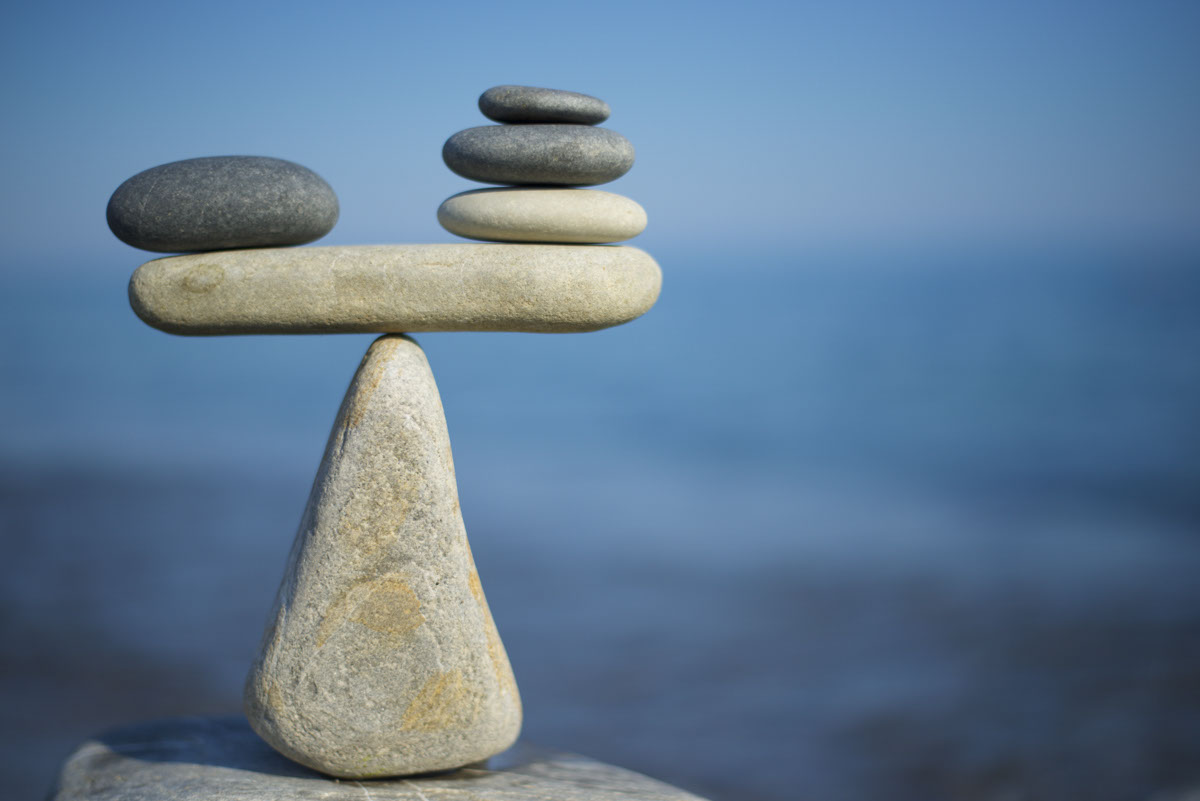
Part Three - How Traditional Chinese Medicine Alleviates the Side Effects of Cancer Treatment
Wong: I understand that traditional Chinese medicine also plays an important role in alleviating the side effects of cancer treatment.
Radiotherapy
Wong: After radiotherapy, patients have many side effects. How can Chinese medicine help?
Lin: Let's discuss a fairly common cancer - nasopharyngeal cancer - as an example.
After patients undergo radiotherapy, they often experience impaired taste; and the patient's salivary glands and tear secretion system will also be damaged to varying degrees, making the mouth and eyes very dry, and the skin will also be burned, the neck skin will turn black, dry and peel off due to the energy of radiotherapy. These phenomena are diagnosed by traditional Chinese medicine as injuries to both Qi and Yin. In treatment, Chinese medicine practitioners will use the method of "nourishing yin and benefiting qi, clearing heat and detoxifying"(養陰益氣、清熱解毒) to help patients, and often use Sha Shen Mai Dong Tang(沙參麥冬湯) for conditioning, which generally can achieve good results.
Chemotherapy
Wong: After chemotherapy, patients often have to face many side effects, such as a decrease in the number of white blood cells and red blood cells; vomiting; and peripheral nerve damage, etc.
Or let's talk about how traditional Chinese medicine can help with the side effects we've already discussed.
Lin: Okay.
Decreased white and red blood cells
Wong: Before each chemotherapy session, doctors need patients to check their white and red blood cell levels. If the levels are too low, treatment may need to be paused, which can affect the smooth progress of the treatment. How can a Chinese medicine practitioner help?
Lin: The decrease in white and red blood cell levels caused by chemotherapy is what Chinese medicine refers to as Qi and blood deficiency. We will use Qi-nourishing and blood-enriching Chinese medicines to regulate the patient's condition. These Chinese medicines have the function of increasing the growth of red and white blood cells.
The most commonly used Chinese medicine formula is called "Ba Zhen Tang"(八珍湯), which is a combination of Si Jun Zi Tang(四君子湯) and Si Wu Tang(四物湯). Si Jun Zi Tang contains ginseng, poria, atractylodes, and licorice(人參、茯苓、白朮和甘草), while Si Wu Tang is composed of rehmannia, angelica, chuanxiong, and peony(熟地黃、當歸、川芎、赤芍). In addition, peanut skin, yarrow, chicken blood vine, and ox horn cheek(花生衣、黃蓍、雞血藤和牛角腮) are also often included in the prescription. These Chinese medicines can improve the decrease in white and red blood cells caused by chemotherapy in cancer patients.
Vomiting
Wong: Vomiting is a common side effect of chemotherapy. Although Western medicine has good results in controlling vomiting, I still want to ask how it can be handled in Chinese medicine?
Lin: The vomiting symptoms caused by chemotherapy are considered by Chinese medicine to be the result of chemotherapy drugs damaging the function of the stomach and intestines, leading to the stomach losing its harmony and descending, and the stomach qi reversing. The most commonly used treatment is "Xiao Ban Xia Tang"(小半夏湯), which is composed of two Chinese medicines, namely Ban Xia(半夏) and ginger(生薑). This formula has the effect of harmonizing the stomach, reducing nausea and stopping vomiting, and has a good effect on treating various types of vomiting. However, it is worth noting that Ban Xia is slightly toxic and should be taken safely according to the instructions of a Chinese medicine practitioner.
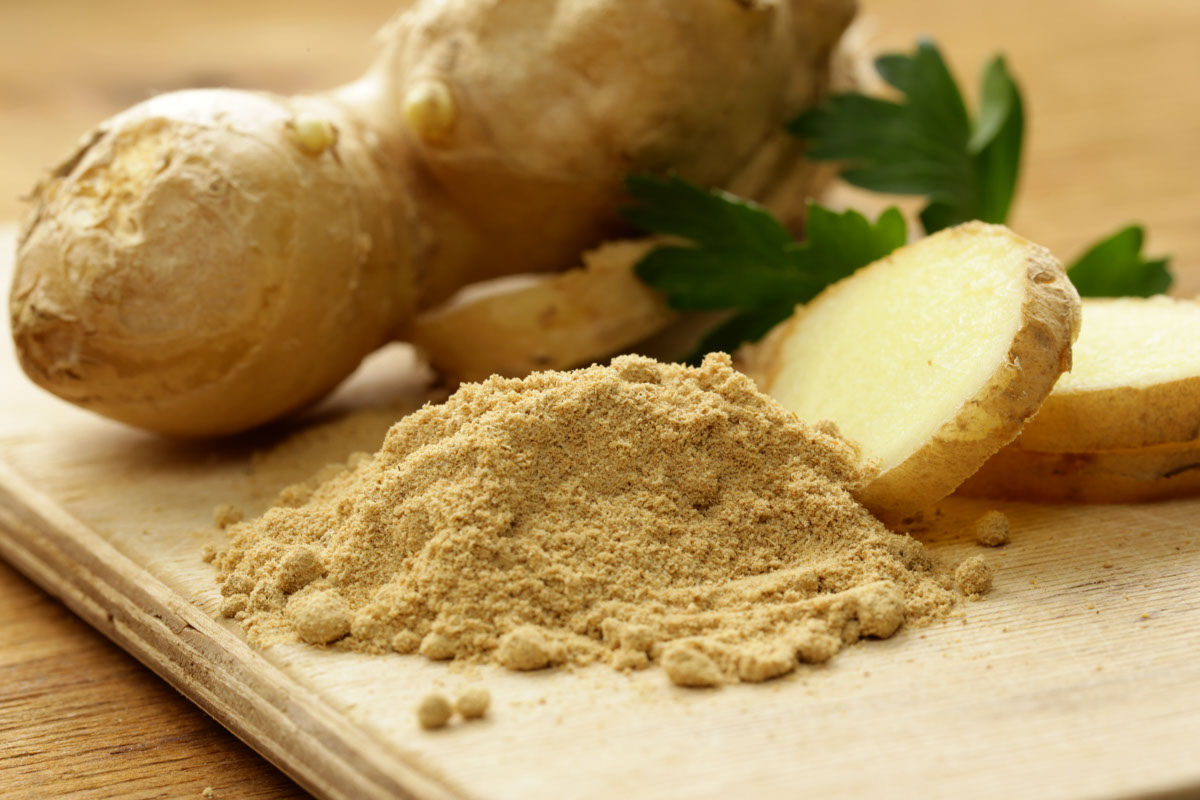
Nerve damage
Wong: After chemotherapy, many patients have a side effect called "nerve damage". Can Chinese medicine provide relief in this regard?
Lin: Some chemotherapy drugs, while killing tumor cells, also damage the patient's peripheral nerves, causing peripheral nerve damage. Symptoms are mostly concentrated in the fingers and toes: including numbness and sensory dullness, insensitivity to cold and hot temperatures, and also tingling, burning, and electric shock sensations.
These clinical symptoms can last for varying lengths of time. Some patients' symptoms disappear shortly after completing cancer drug treatment; but for some patients, they may linger for a period of time (measured in months or years), and in a few severe cases, they may not completely disappear.
In the treatment of peripheral nerve damage, Chinese medicine mainly uses acupuncture to relieve patients' pain, numbness, and prickling discomfort. Literature data shows that acupuncture therapy has a good effect on peripheral nerve damage and is worth promoting.
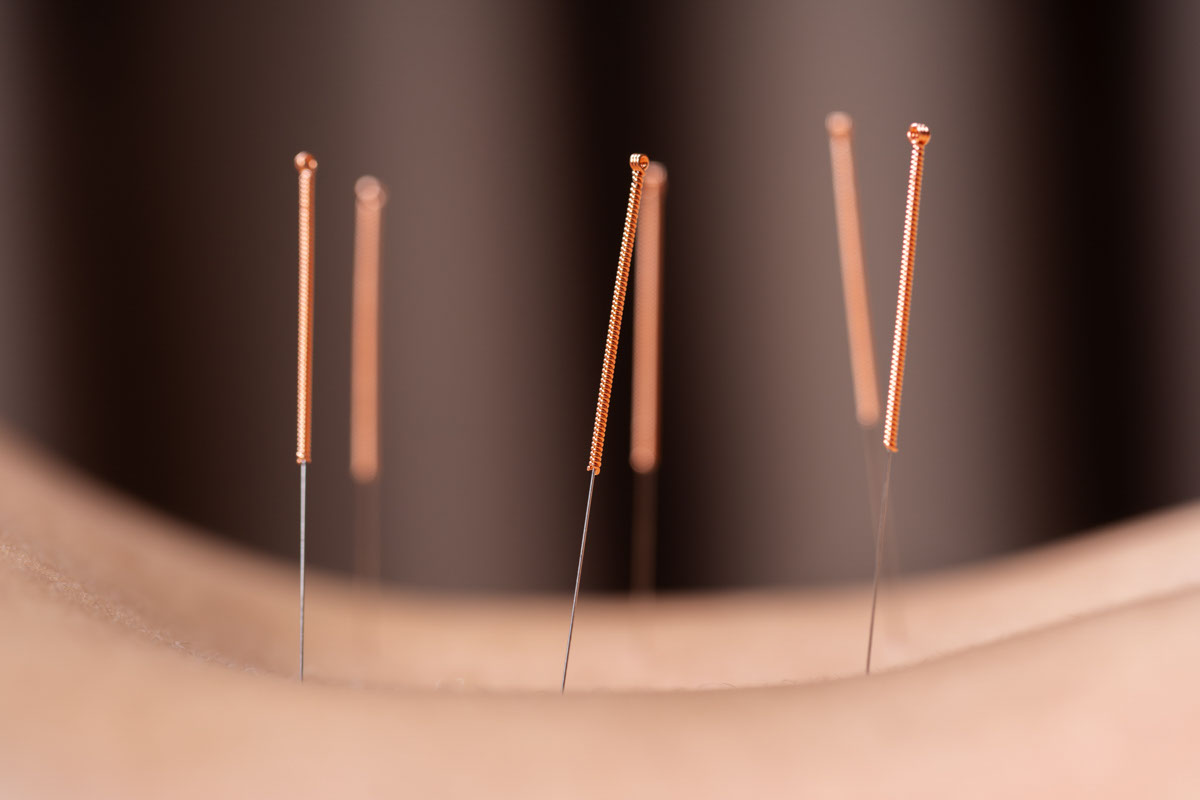
Part Four - Post-Recovery Handling and How to Prevent Recurrence
Wong: So what about after recovery? How can we try to prevent cancer recurrence?
Lin: To prevent cancer recurrence, the main principles and measures are the same as those for cancer treatment, which are still "supporting the healthy and expelling the evil"(扶正和祛邪). Even if the patient recovers, they still need to continue to maintain a good physique, which is "supporting the healthy". If there is still a possibility of recurrence, then we need to continue to "expel the evil".
Chinese medicine practitioners will adjust the ratio of the two according to different clinical symptoms and the strength and weakness of the patient's constitution, hoping to achieve the best effect. According to the experience of famous Chinese medicine practitioners, some dietary therapies also have certain benefits in preventing the recurrence of cancer. Cancer survivors can use 60-120 grams of coix seed, 30 grams of poria, 10 grams of ganoderma, etc., stewed and taken daily(薏苡仁60-120克,茯苓30克,靈芝10克等燉煮,每日服用).
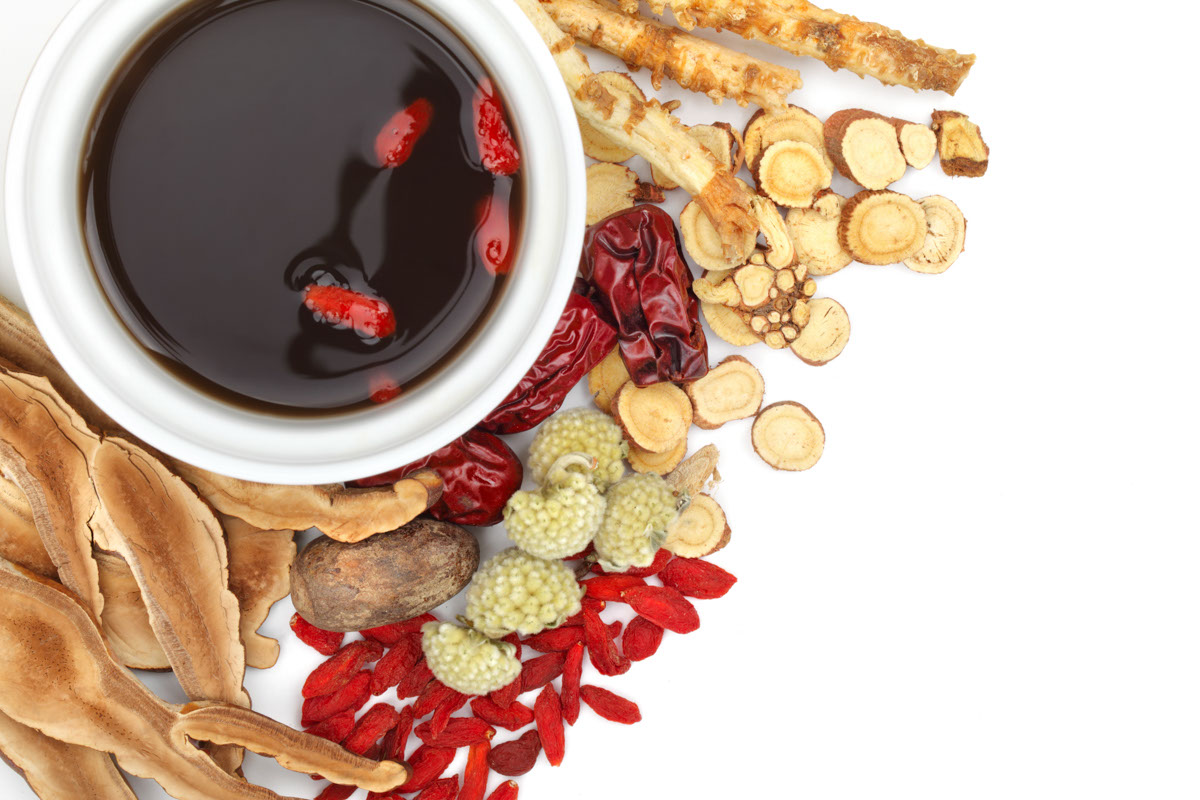
Part Five - Acupuncture or Other Topical Treatments
Wong: We just briefly mentioned acupuncture.
In addition to "internal treatment"(內治) (i.e., taking Chinese medicine), traditional Chinese medicine also includes "external treatment"(外治), including topical medication, hot ironing, fumigation, acupuncture, moxibustion, massage, etc.(藥物外敷、熱熨、薰洗、針灸、艾灸、推拿等)
In recent years, Western medicine has also accepted that acupuncture has a certain role in pain management. Can you please explain the basic principles of acupuncture.
Lin: Acupuncture is a very common method among many therapies in traditional Chinese medicine. At present, the clinical application of acupuncture is mainly used to treat various pains and regulate the body's immune resistance.
Simply put, acupuncture is to use needles or moxibustion and other methods to stimulate the body's meridians or acupoints, causing a series of physiological effects, thereby regulating the body's organ functions, dredging the meridians, and thus achieving the function of treating diseases and reducing pain.
Wong: Can you explain how the mechanism or pathway(機理) works?
Lin: The traditional Chinese medicine practitioner inserts needles into the patient's acupoints and performs appropriate manipulations such as twisting and lifting, stimulating the nerve endings in the human body. The body then produces natural endogenous painkillers (such as endorphins, enkephalins, etc.). These bioactive substances have a very strong analgesic effect, which helps patients reduce the feeling of pain.
Wong: What symptoms does acupuncture work best for?
Lin: The World Health Organization recommended dozens of indications for acupuncture treatment more than a decade ago, including lower back pain, facial muscle pain, tennis elbow, sciatica, degenerative arthritis, periarthritis of the shoulder, migraines, post-stroke sequelae, facial nerve paralysis, depression, anxiety, insomnia, impotence, dysmenorrhea, chemotherapy-induced vomiting, etc.
It can be said that acupuncture has a very wide range of applications, especially for various types of pain.
Wong: Traditional Chinese medicine treatment also includes hot compresses, moxibustion, etc., which all use heat. What is the principle behind this?
Lin: Hot compresses and moxibustion are also commonly used external treatments in traditional Chinese medicine. Traditional Chinese medicine says "if it flows, it doesn't hurt"(通則不痛). The occurrence of pain is due to the poor circulation of qi and blood in the meridians. The heat from hot compresses and moxibustion can promote the circulation of blood and qi, thus achieving the effect of "warming and unblocking the meridians, if it flows, it doesn't hurt"(溫通經絡,通則不痛).
Wong: I am very grateful to you for sharing so much with us today.
Lin: You're welcome.
(December 2021)





